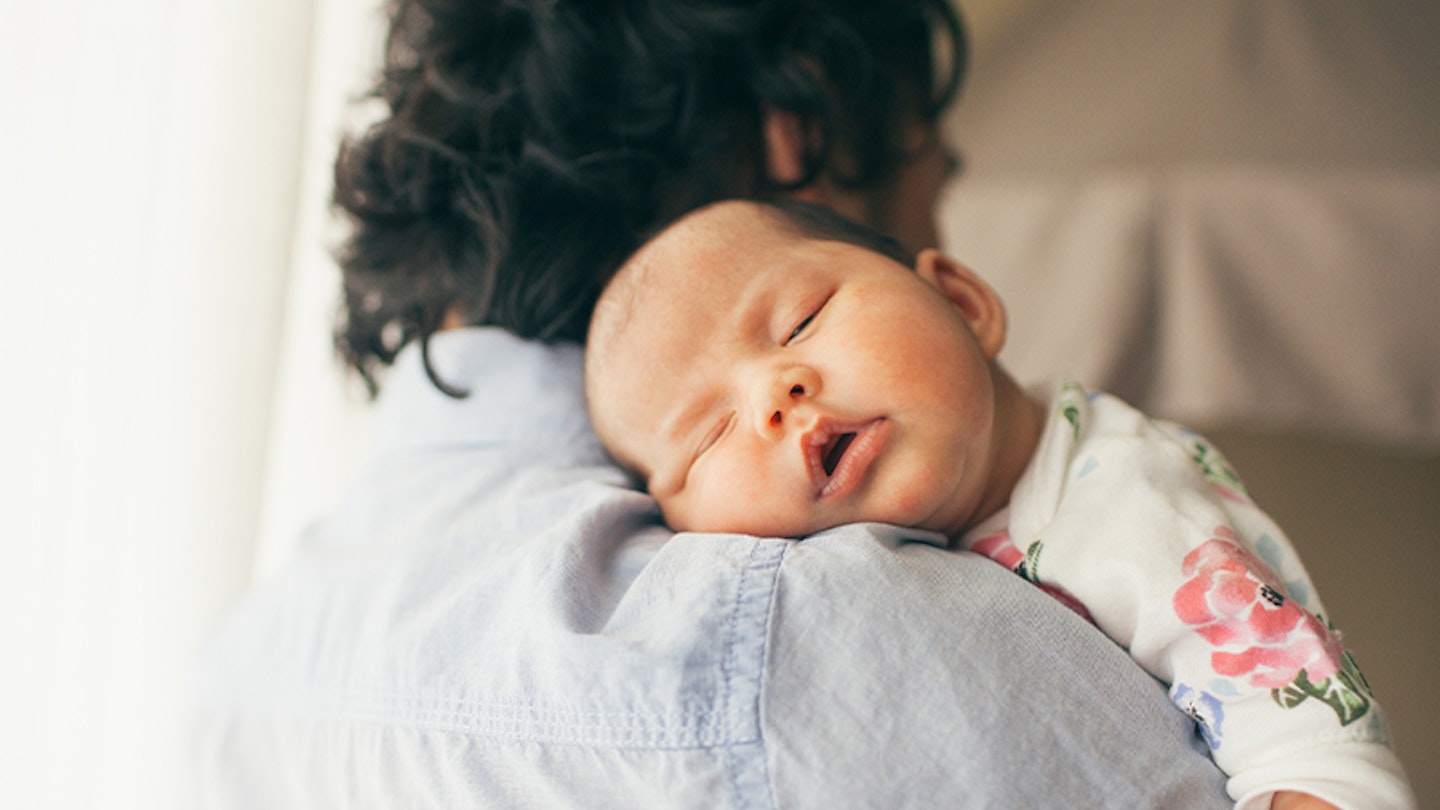
Expert Consulted: Sarah Ockwell-Smith
Most mums-to-be are well versed on the changes and challenges that come with the first trimester of pregnancy, the second and third one too but what about the fourth trimester? You may not have heard of it, but every parent and their newborn baby will experience it. Here we get some expert advice to help you and your baby through this important stage and explain what it means for you and your baby.
What is the fourth trimester?
The fourth trimester refers to the first 12 weeks of your baby's life after birth and outside of the womb until they are three months old. It's a time of physical and emotional adjustment for both the parents and the baby.
Parenting expert Sarah Ockwell-Smith says, ‘To empathise with our newborns feelings we need to put ourselves in their place, to imagine experiencing their world – but which world? The world they have spent most of their life in, their ‘womb world’ or the world they are in now – our world.’
Trimester might sound like a bit of a funny term considering your baby is now out of your womb, but over the next three months, they'll be experiencing a lot of new and exciting things in their new environment and getting used to their new found senses.
There's a growing parenting theory about how to help your baby to adjust to the outside world after months in the womb. Pioneered by Dr Harvey Karp, author of The Happiest Baby on the Block, the book is based on the idea that parents treat themselves as a ‘walking uterus’ in the first three months after birth.
‘Our babies aren't like horses. They can't run the first day of life,’ Karp says. ‘And so we need to recognise that they're evicted from the womb three months before they're ready for the world.’
So how can we go about helping our babies adjust?
How will my baby develop in their fourth trimester?

Senses
The biggest change in your baby's senses will be their sight. While it starts out rather blurry after they're born, their vision starts to improve and by the time they're eight to nine weeks old, their vision is just as good as an adults.
When it comes to taste and smell, your baby already has strong senses and is able to smell the familiar scent of their mum, which is what gives them the instinct to bob their head around and find your nipple to feed.
And if you've been playing music to your baby for the past few months and even reading to them, this isn't wasted as they can hear in the womb and when they're born, they'll instantly be able to recognise your voice.
Physical development
It's fair to say that when they're born, they're physically very limited, but giving your baby regular tummy time will help them develop their strength and by three months old, they might even be able to push themselves up.
Sleep
Your baby will sleep a lot in these first few months, but it may take them a while to get into a sleep routine as they still don't know the difference between day and night. For now, let them sleep as much as they need to until they get into a good routine.
Crying
It's totally normal for your baby to cry a lot during the fourth trimester, and the crying will peak around the six week mark. The crying will usually ease off by the three month mark.
Feeding
Your baby will need to feed little and often on demand in their first few months as they only have very small stomachs. The more time you spend with your baby, the more you'll get to know their cues for when they're hungry and want to feed.
The more you get to know these cues, the less likely it is that your baby will start crying meaning they're more likely to latch on better if breastfeeding.
How can I soothe my baby during their fourth trimester?

Swaddling
Babies spend months enclosed in the womb, so whilst they get used to all the space around them in the first few months, swaddling is a great way to recreate that feeling and help them feel safe. The best material to use for a swaddle is 100% jersey cotton as the natural elasticity in this material allows your baby to move, flex and stretch.
White Noise
Babies love different sounds, but in the first few months it’s actually white noise that’s the most calming; recreating the sorts of noises they’re used to hearing in the womb. Shushing also imitates the continual whooshing sound made by the blood flowing through arteries near the womb.
Baby wearing
Babies are used to feeling the movements of the mother in the womb, so it’s understandable why newborns love feeling attached to their mum when they’re out in the big wide world. Carrying your baby around in a sling - the practice of baby wearing - a great way to recreate this safe womb feel and they’re able to tune into the calming sense of their mum’s heartbeat and breathing. The bonus for mums is that it frees up your hands!
Position
Karp recommends placing a baby on her left side to help with digestion, or on her stomach to provide reassuring support. Once the baby is sleeping peacefully, you can turn her onto her back, which experts say is the safest sleep position for babies.
Swinging
Every movement a pregnant mum makes feels like a swinging motion in the womb as your baby, so swinging your baby in your arms, having a jig or placing them in a rocker imitates this safe, recognisable feeling. It’s a great way to bond with your baby, too.
Skin to skin contact
This is strongly encouraged in the moments after you give birth, and can continue long for as long as you like. Skin to skin contact is also known as Kangaroo care and is a form of cuddling your newborn on your bare skin. It's a great comforter and soother for them and helps with the bonding experience for both of you. The great thing is that your partner can also do it.
How can I help myself in the fourth trimester?
Those first few months of the fourth trimester are a huge adjustment for everyone including any new parents. Baby needs constant care, and it's easy for parents to forget about themselves in the process. Between the feeding, sleep deprivation, processing hormones and the physical recovery from birth, it's totally understandable to feel completely worn out.
If you've had a traumatic birth, you'll need to recover but you still need to look after your newborn so emotionally and physically it's a struggle. As with everything, it’s worth remembering that this stage will pass, but know that your feelings are valid.
Ask for help: Ask your mum or mother-in-law to come and stay with you even if it is for a few days. If this is not possible, ask your close friends to pop in to check on you, bring some good with them and will be more than happy to help with things around the house or look after your older children if you have any. Your partner is likely to have paternity leave so can also help during this time.
Eat well: Before baby arrives, try and batch cook and stock up on as much non perishable food as possible. If you're breastfeeding, you'll still need healthy snacks your body will need extra energy and nutrients. Healthy snacks include fresh fruit, thick Greek yoghurt, nuts and seeds, milk drinks or fruit blended smoothies.
Light exercise: If you've had a straight-forward birth, some gentle exercise should help with your recovery. Even carrying your baby and walking around your house is good to start with, then you can start going for short walks around your neighbourhood. This will help with your recovery and energy levels.
Sleep when you can: This is obvious but also paramount. Some people suggest you should sleep when your baby sleeps, and if this feels right, do it especially in those early stages - everything else can wait. Remember, it's going to take a while for your baby to get into a routine and sleep well through the night so take what you can, when you can. Remember, it took nine months to grow your baby, so give yourself enough time to recover.
Reach out to other mums: It can be a bit daunting doing things on your own with your baby, so join local groups, reach out to other mums in the park or in your neighbourhood who may also want some company. Talking with other mums will make you feel validated and understood alongside other women going through the same thing
When does the fourth trimester end?
The fourth trimester ends at the of the first three months postpartum. This doesn't mean that everything will snap back to normal, and what is normal now? You'll have a new normal now and that will take some gradual adjustment to. Hopefully the fourth trimester will ease you into it and you'll have your baby to help you through it.
About the expert
Sarah Ockwell-Smith is a well known parenting expert and popular childcare author who writes about the psychology and science of parenting. Specialising in ‘gentle parenting,’ she's also authored 15 books which have been translated into over 30 languages and have sold over half a million copies.
About the author
Maria Martin is the Online Editor for Mother&Baby. She is a biker, mama-of-one who enjoys baking and taking her little one to messy play. Maria's focus is around breastfeeding, post-partum depression and weaning. She aspires to help fellow mums through pregnancy, motherhood and beyond by discussing issues such as mental health and self-care.
